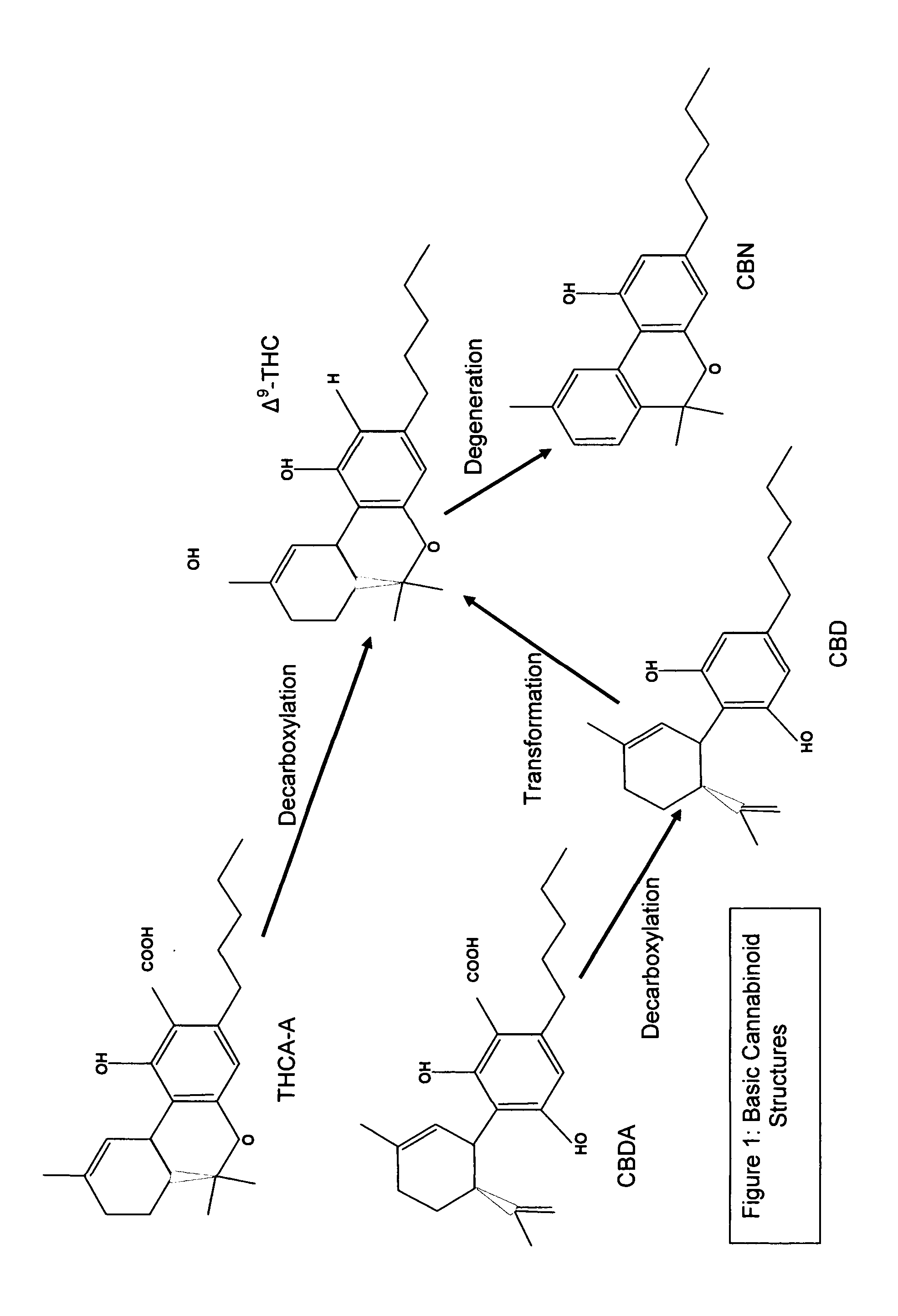Controlled cannabis decarboxylation
a technology of decarboxylation and controlled cannabis, which is applied in the direction of biocide, drug composition, immunological disorders, etc., can solve the problems of uncontrollable uncontrolled crude processes that use no toxic chemicals, and decarboxylated substances within cannabis lost to evaporation, etc., and the “uncontrolled” processes that rely on temperature are truly uncontrolled
- Summary
- Abstract
- Description
- Claims
- Application Information
AI Technical Summary
Problems solved by technology
Method used
Image
Examples
example 1
Part 2: Forming a Δ9-THC-Lipid
[0074]Add 500 mL of hemp seed oil to the mixture and heat following the constraints described above for 15 minutes.
[0075]The material is then cooled to a temperature where it can be rendered into a fatty foodstuff base material. The material may be filtered or strained at this point in the process.
[0076]The controlled decarboxylation of raw cannabis is a unique aspect of this invention. Other unique aspects are the combinations of materials and temperatures used. No toxic substances are used in the best mode of this invention: preferred materials include raw cannabis, Vitamin B6, ethyl alcohol, and hemp seed oil; even so other similar materials and slight modifications to processes described above that are obvious to a person of ordinary skill in the art are considered an embodiment of the invention described herein.
[0077]One instance of such a process is were a intermediate products is bonded to a lipid using some of the same steps described above; he...
PUM
| Property | Measurement | Unit |
|---|---|---|
| Temperature | aaaaa | aaaaa |
| Acidity | aaaaa | aaaaa |
| Mixture | aaaaa | aaaaa |
Abstract
Description
Claims
Application Information
 Login to View More
Login to View More - R&D
- Intellectual Property
- Life Sciences
- Materials
- Tech Scout
- Unparalleled Data Quality
- Higher Quality Content
- 60% Fewer Hallucinations
Browse by: Latest US Patents, China's latest patents, Technical Efficacy Thesaurus, Application Domain, Technology Topic, Popular Technical Reports.
© 2025 PatSnap. All rights reserved.Legal|Privacy policy|Modern Slavery Act Transparency Statement|Sitemap|About US| Contact US: help@patsnap.com


